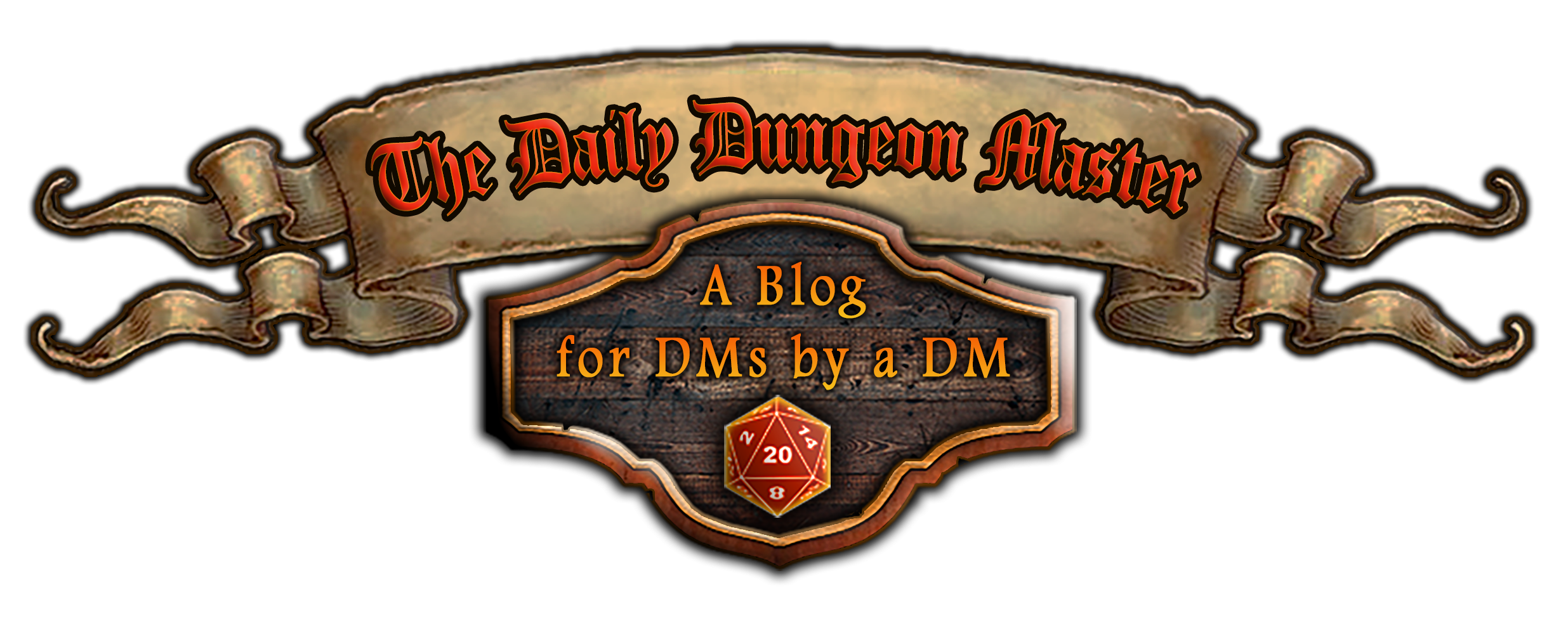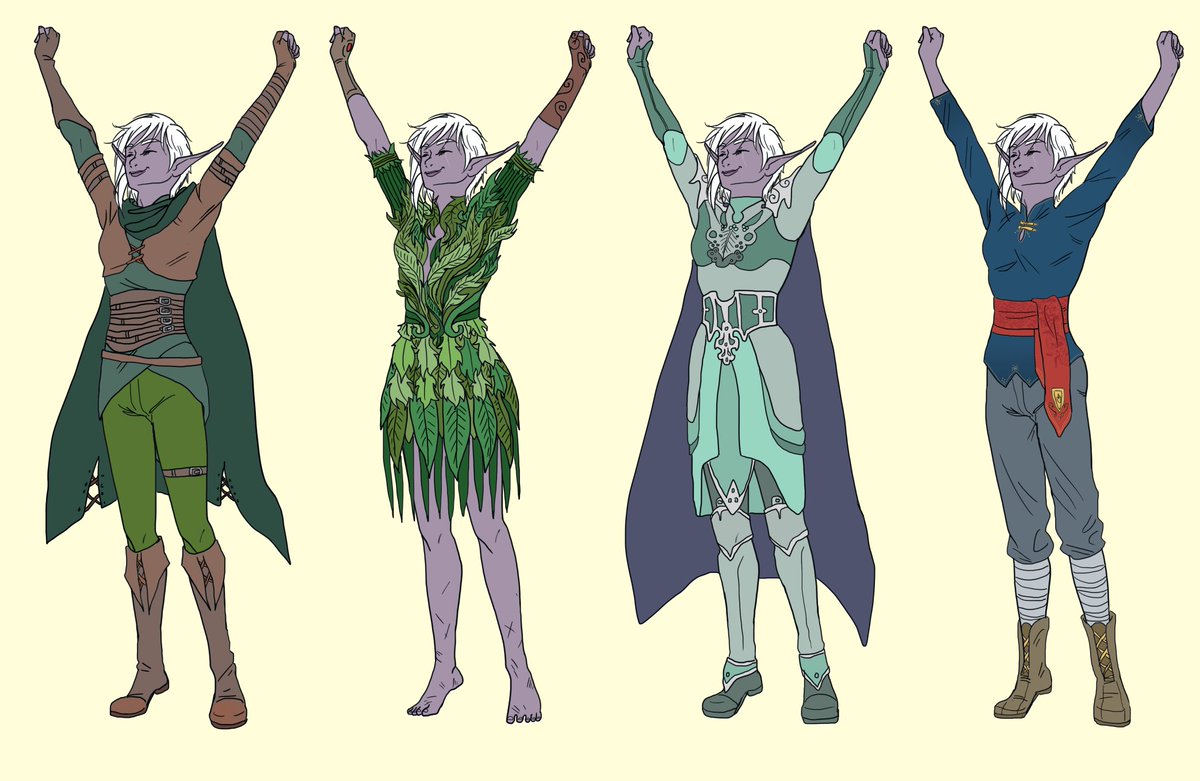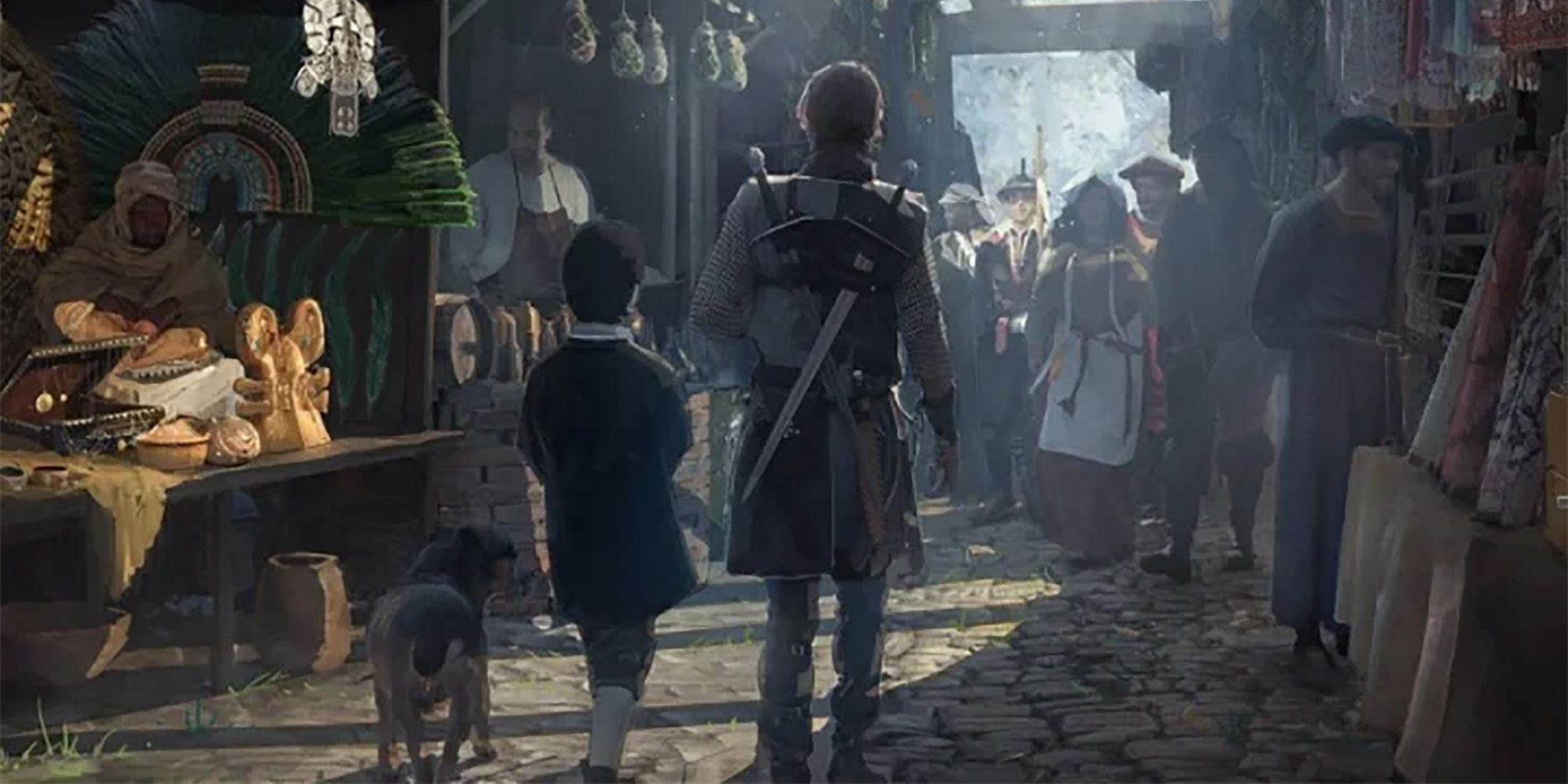Welcome 🙂
Allow me to speak on behalf of the entire Dungeons and Dragons community when I say we are glad to have you! Dungeons and Dragons is a social game, through and through, and we are always excited when someone is interested in joining in on the fun!
But with your first D&D session comes your first D&D character… and that might make you a little bit nervous. Starting something new can be intimidating, especially when that thing involves new rules, acting, and cooperating with people you might not know very well.
But you have no need to worry 🙂
Not only are there a wealth of resources to help you learn along the way, but it is surprisingly easy for a D&D beginner’s first character to be both fun and interesting to role-play for months on end!
If you are more interested in learning about weapons, gear, armor, rules, etc. click the links or try a google search.
But… if you are looking for a method that is guaranteed to result in a character you will LOVE to role-play through every adventure, then read on!
Table of Contents
“Good” vs “Bad” Characters
The 15 Questions
- Cool Class?
- Race/Species?
- Purpose?
- Growth?
- Values?
- Allegiance?
- Family?
- Personality?
- Appearance?
- Gimmicks?
- Accent?
- Hobbies?
- Magic Item?
- Backstory?
Conclusion
BONUS
“Good” vs “Bad” Characters
Before we create a good, interesting character, we need to know a tiny bit about what kind of game Dungeons and Dragons is. After all, a good chess player is a lot different than a good rugby player or a good mahjong player!
First and foremost: D&D is not a game where people ‘win’. There is no board, no victory points, and nothing to Jenga. It’s about using your imagination to tell a story and have an adventure with your friends.
Even though you cannot ‘win’, everyone can still ‘lose’… sorta. A ‘loss’ is just having a bad/no-fun experience. This can happen in all sorts of ways: people being on their phones, arguing with the DM, playing selfishly rather than compromising, not cast a healing spell when your friend is bleeding out in front of you… (ahem… Kevin…).
But there is one way a single player can ‘lose’: by creating a boring character.
Your “player character” is the person you imagine and inhabit to play that game. This player character can be a lot like you or very different from you, but regardless it is your character, not you, that is a star in the story.
And if your character is one dimensional or undeveloped, eventually you will get tired of this character. You’ll find yourself desperately hoping they somehow die so you can roll a new one.
Thankfully, you don’t have to be a creative genius to create a good character. Usually no one has taken the time to explain to a first-time player how to create an interesting character.
D&D is a special game, and it takes some special insight to know what makes a character in D&D fun to role-play!
With all that in mind, here are the 4 goals for D&D beginner’s making their first character:
- Easy to make
- Relatable and fun to role-play
- Interesting and Unique
- Simple and straightforward (You don’t want a character too complex… it’s your first game after all!)
That might sound daunting, but trust me, it’s actually pretty simple!
What follows are 14 easy questions for you to choose from to help you create an interesting first character.
You don’t need to answer them all!
Just answer your favorite ones and fit them all together until you are happy… easy peasy!
The 14 Questions
NOTE: I have placed these questions in the order I feel is most helpful, but feel free to answer first whichever comes easiest! And even if you only use half of these questions, your character will stand out as interesting not only to you, but to everyone at the table!
- What kind of player-character sounds Cool?
If you haven’t done this already, the first thing you as a player need to decide is what kind of things you want your character to do. Do you want to be a sneaky Rogue, knightly Fighter, or maybe a spell-slinging Wizard? We don’t need to know every rule and mechanic, we just need to know the basics of the class so it can inform the type of character we create.
All of these are examples of D&D CLASSES. There are thirteen official classes in Dungeons and Dragons 5th edition. Jocat made a brief and helpful video series on the different classes (and their subclasses), or you could reference this simple infographic:
If you are REALLY new to the game, I strongly suggest playing the Fighter or Barbarian; they are the easiest first characters for beginners. But if you are willing to put in the extra effort to learn about what makes them unique, the rules, and how spells work, then go ahead and pick whatever you like!
NOTE: I debated putting this step LAST! Often I will pick a class that sounds cool, then build a character, and then completely change the class to fit the character! So don’t commit to this too hard; all the classes in D&D are fun to play, so it is much more important to find a character you really connect with than a cool class.
- What race/species are you?
This could be a whole other blog post, but long story short: there are lots of races in Dungeons and Dragons each with their own unique traits. But here is the secret: just as the class does not make a good character, same goes for the race! You can make an interesting character that is fun to role-play no matter what race you choose!
Your Dungeon Master will allow any of the first 9 races on this exhaustive list, so I would choose from those. But if you want to dip into something more unique, ask your DM what other exotic races from the list are in their world!
My three suggestions: 1) Don’t overthink… do what your gut tells you! 2) If your gut is uncertain, just be a human! 3) Just like your class, fit the race to the character, not the other way around!
- What’s the character’s purpose?
Just like in the real world, the people of D&D want to contribute to their society. Your character is no different, and probably wants to help build a better world.
Think of some problems in the world: injustice, peace on earth, hunger, environmentalism… choose one “cause” that will resonate with your character… something for them to make their life’s work.
Once you land on something, let your Dungeon Master know, and they can help you integrate your player-character’s life mission into the adventure and world. It’s always easier to role-play when the world is designed a little more around your character!
- How does your player-character need to change/grow?
This is the most important question you have to answer!
If your character is a part of a story, then they need some inner conflict to resolve along the journey. What do they most desire in life? What is the biggest problem that they struggle with? This is the heart of role-playing, and what will make them interesting after months, even years, of playing.
They may have a purpose to help the world, but this inner drive is the motivation behind that purpose. (Example: In Star Wars, Luke Skywalker wants to defeat the empire, but it is actually more important to him that he avenge his father that was killed by Darth Vader.)
And don’t worry: just because you pick how your character needs to grow does not mean you know the end of the story! Just like everyone else, you will be along for the ride, and get to see how your character becomes the hero they were always meant to be!
- What are your character’s values?
Everyone has a shadow side. The pure hearted still harbor dark thoughts, and even the most evil people have shining spots of their hearts.
No matter what your character does or who they are, give them AT LEAST one virtue (hope, courage, etc.) and one vice (lust, jealously, etc.) that they regularly display and is a part of their personality. Nothing is as boring as a character that is 100% good or 100% evil, and nothing is as interesting as someone struggling with both.
Once you know the state of their soul, and how you want them to grow, I would choose their alignment: a simple classification to help guide your role-playing when you aren’t sure what to do.
- Where does your PC owe allegiance?
While some people are true hermits, most people have their roots in society in some way. Allegiances can be lowly (local tavern, guilds, underworld thieves) or lofty (nation-states, religions, academies). Consider where your PC feels most at home and what groups might share their values.
And if your Dungeon Master is running your campaign in a homebrewed world, ask them about their world! What are the governments like? What factions did they create? Alternatively, you can tell them about your character, and they can suggest some organizations your character might be interested in!
- What is/was their family like?
What are their parents like? Do they have siblings? Did extended family live in the village or nearby? Do they miss home, or are they adventuring to escape something unhealthy?
Lots of characters in D&D are orphans, and there is nothing wrong with that. But if your character has a big loving family, you can be sure that family will come up in the campaign. EVERYBODY remembers family drama and is interested to meet your family, even in imaginary table-top settings!
- What is your character like?
Personality is a huge part of what makes your character interesting, but it is also another thing people tend to try to decide too early, or base off their class rather than their character.
But now, you have enough info on your character to think about their personality. What is it like to be around them? What emotions do they feel or cause others to feel? How do their values, struggles, and allegiances cause them to behave?
You are absolutely free to play a character that is exactly like you. Often it can make role playing easier. But don’t hesitate to create someone fantastical! Dungeons and Dragons is a magical wonderland, so usually you can disregard the feeling of “oh man… am I going too far?”
- What does your player-character look like?
It’s likely that the characters in your party will be wearing some semblance of medieval attire. And since people cannot see your character, you need some distinguishing thing about them your fellow players can quickly remember. So be sure there is a single piece of clothing, something unique that helps them stand out.
Maybe they have a red sash, or a unique hat, or a bright robe? Or maybe it is how they look, not what they wear! Maybe they have a long flowing beard, or braided hair, or a unique skin tone, or horns, tusks, or a tail! Whatever you choose, pick something that can quickly come to mind.
- Do they have any gimmicks?
Sometimes it’s the little things that make all the difference. Maybe it’s something physical, like biting your nails, twiddling your thumbs, or scratching your head. Or it can be a personal catchphrase or favorite idiom. And there is a huge spectrum of good and bad manners… where does your character fall? These are things you can role-play to help your character stand out.
Small, interesting details like these can make your first character really come alive. If you can’t think of one, look at what you have so far, pick an emotion your character will probably feel a lot throughout the campaign, and assign a gimmick that will go with it.
- How does your character talk?
For many people, especially beginners, this is the most intimidating part of both role-playing and D&D. And it’s true that people will get a good laugh as you try to figure out exactly how your character talks and sounds.
That said, I really want to encourage you to give it a try! Giving your character a unique voice helps the whole table collectively have a more vivid imagination. Even though they see you in your street clothes, they will hear your voice and see your character rather than you! It’s a part of the mysterious magic that makes D&D amazing.
- What are their hobbies?
Most people in real life are not blood thirsty murder-hobos or workaholics! We go to work, eat and sleep, and ALSO enjoy a host of other things with our downtime.
So give your character a life outside of questing and adventuring. What interests do they talk about when they are not fighting? What pleasures to pursue when they are in town in between adventures?
- Do they have a prized possession?
Being in a fantasy adventure, this goes without saying. Frodo has Sting, Arthur has Excalibur, Harry Potter got the Elder Wand. What special artifact or trinket does your character have?
https://www.enworld.org/attachments/magic_ring-jpg.111688/
Granted, your 1st level character probably should not have the foretold weapon of unimaginable power… but giving a weapon cool name or unique description is never a bad idea!
- What’s your player-character’s backstory?
Yes…do this one last!
So many D&D players start with an interesting backstory and then build their character.
But often they get a character with a cool backstory they are committed to, but it actually restricts their creativity, resulting in something that is boring to role-play.
Look at the character you have so far that you know you want to play, come up with a short summary of their life that explains why they are the way they are and how they started adventuring. Honestly, a single 5-8 sentence paragraph is enough.
Mix and match, add and subtract from your answers and the backstory until you discover a character that you LOVE.
Also, you might create this character and realize they are strikingly similar to a character from your favorite stories, fiction or nonfiction… and that is ok! There is a good reason you resonate with that character. Put your unique spin on it, and then explore that character in a way only D&D can!
CONCLUSION
There you have it: 14 simple questions you can ask yourself to easily build an interesting D&D character!
If you follow these steps, I guarantee your first D&D character will be fun and interesting to play.
Not only that, but I promise your character will even become a favorite of the other players at the table!
Because if their clothes match their personality… and their values match their allegiances… and purpose match their personal issues… every part of them speaks towards another part.
This results in a well-rounded character that stands out from the crowd and just feels right!
And yet, like I said before, there is no “winning” in D&D! Whatever questions you choose to answer, no matter what your player character needs to be someone you enjoy role playing! No matter what, make sure you have fun, and once again, welcome to Dungeons and Dragons!
BONUS! Example Character
That’s right, I’m not done yet! Just to prove I take my own advice, here is an example player’s character (not an NPC!) that I fully intend to play someday soon!
- Cool idea: I wanted a character to constantly enchant people, and I wanted to play a stereotype and support class… so horny bard!
- Race: I want to REALLY stand out in a crowd, and a race that breaks the stereotype, so Drow maiden (a type of elf)
- Purpose: To fill the earth with laughter and singing and dancing.
- Growth: The reason she loves joy so much is she is running from trauma (a little histrionic). She needs to heal and learn to grieve.
- Values:
- Virtues: Joy, Acceptance.
- Vices: Vain, Shallow.
- Alignment: Chaotic Neutral
- Allegiance: the Seelie Court… sorta. Whoever she is in love with at the moment gains all her devotion.
- Family: Adopted, in the feywild… as difficult to be in relationship with as she is, so left.
- Personality: Bright smile and electric laugh, flirt (a little like Grushenka from Brothers K).
- Clothing: Beautiful, long purple dress, stunning sunglasses, white hair, light grey/purple skin.
- Gimmick: constantly resting her head in her hands as she listens… speaks in extremes
- Accent: Maybe a little like Cruella Devill
- Hobbies? Her one place of reflection is writing poetry… but she intimidates herself with it.
- Magic items: Magical sunglasses (sunlight sensitivity!)
- Backstory Born into a noble Drow house in the Underdark, her vengeful, jealous sister sold her into slavery. Suffered in bondage for years, but escaped from slavery. Was found nearly dead by a fey creature in the woods. Was taken into the feywild and for decades and decades forgot her sorrow by constant pleasures. Now, strangely unsatisfied with fey, is interested in returning to the material plane to experience what other mortals experience.
Hope that helps, and let me know that character you came up with… always fascinating to see how creative people can be!
Discover more from The Daily Dungeon Master Blog
Subscribe to get the latest posts to your email.





